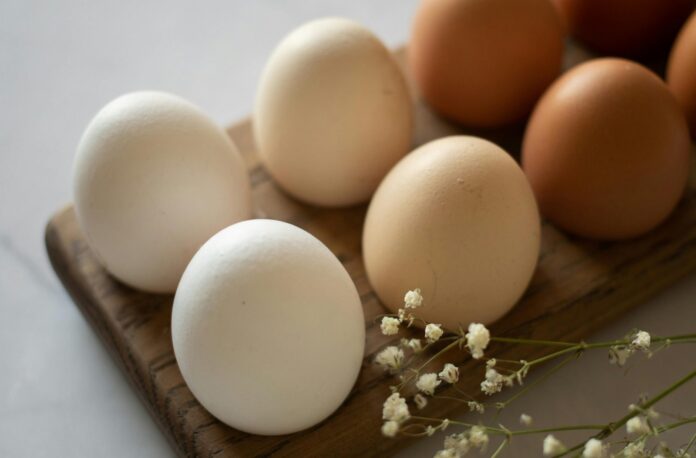With autumn’s arrival, opportunities to spend time in the sun grow scarcer, reducing access to the most important natural source of vitamin D. A deficiency in vitamin D can lead to problems with bone development and maintenance, and additional symptoms including muscle weakness, fatigue, and depression.
To supplement our bodies’ necessary daily dose of vitamin D, Virginia Tech poultry expert Mike Persia has a recommendation for an additional source: Eggs. His research has supported the practice of adding vitamin D to chicken feed, which the hen adds to the egg yolks she produces and packages as part of the egg.
“Poultry farmers already supplement laying hens diets with vitamin D to help the hen regulate calcium metabolism for skeletal health and eggshell production,” Persia said.
He answered questions about the problem of vitamin D deficiency and how eating eggs can help.
How can eggs help us get enough vitamin D?
“Check the current USDA label on a carton of eggs and it will show that having that two-egg omelet provides 22 percent of the recommended daily allowance for vitamin D. Additionally, we can provide additional vitamin D to the hen’s diet to produce a value-added egg that is more nutrient dense. This process has already been adopted commercially. At grocery stores, customers can look for egg cartons with a specialty label indicating high vitamin D or high nutrient eggs.”
Why aren’t people getting enough vitamin D?
“Historically, people have used sunlight to naturally synthesize vitamin D within the body. In modern times, we have moved inside, because of developments like desk jobs, video games, and air conditioning. We have taken steps to avoid skin cancer, by doing things like wearing hats and shirts, seeking shade and using sunscreen. As a result, we have reduced our ability to naturally produce vitamin D. Thus, we need to get more vitamin D from our diets now.”
What drew you to research the process of adding Vitamin D to eggs?
“Eggs are already a highly nutrient dense food, and they are the most cost-effective method to provide essential protein and other nutrients to our diets. With that idea as a starting point, my team considered that the vitamin D already used in poultry production was resulting in an increase in the vitamin D naturally found in an egg. Therefore, the question became how much vitamin D we can safely provide through supplementation to a laying hen, and how much of this will the hen transfer to the egg itself.”

